Center Of House
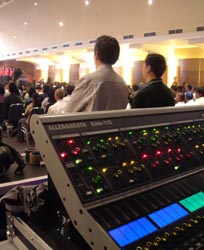
- Allen & Heath iLive 112 control surface at the GKPB church in Jakarta, Indonesia.It's been eight years since Yamaha launched the PM1D digital mixing console onto an eager but still largely unsuspecting professional audio public. In that time, thousands--perhaps millions--of live performances have been controlled from a digital control surface, and the technology is widely credited not just with raising the audio quality of such performances, but with transforming the way shows are produced.
- "Engineers are truly utilizing the advantages of digital mixing," said Marc Lopez, marketing manager, Yamaha Commercial Audio Systems.
- "They're creating starting point presets, doing offline setup of mixes before they get to the venue, and using wireless PC control of the mixer--walking around the room and adjusting their mix accordingly."
- From a creative perspective, the deployment of digital console technology has led to a huge increase in the number of options available to sound designers. "In today's theatrical productions, you've got to get signals to and from lots of different places," observed David Webster, marketing director at DiGiCo. "You might have one input that just has to go to one loudspeaker for 30 seconds in the entire show. But it has to go there, and with the right digital infrastructure in place, it can."
- The high cost of the earliest digital consoles meant that most 'early adopters' were touring bands and musicals. But it wasn't long before the technology's advantages began to make it logical for venues to install consoles of their own as part of an in-house system. "When we started designing digital consoles, we weren't looking at them from the point of view of live performance," Webster said. "We were looking at a theater's resources--what audio they needed, where they needed it to go, and in what quantities."
- Initially, theaters and other performance venues acquired digital consoles as direct replacements for analog boards, in what were logical but essentially piecemeal upgrades. As time has gone on, however, more and more theater managers are viewing their digital consoles as a hub around which they can build a sophisticated audio network.
- "To a certain extent, you can understand why some people just want to buy a console and plug it into their big, copper, analog infrastructure, if the console is all they can afford to upgrade," Webster said. "But in the long term it doesn't make sense. With our system you have your mic pre-amps in the rack close to the stage, which gives you the best signal-to-noise ratio. After that you're in the digital domain and you can network right around the building, either with standard BNC cable or, for greater distances, optical fiber.
- "On the same optical loop, you can have FOH, monitor, live-to-air broadcast and recording consoles, all picking up from the same place, with no duplication of pre-amps and all the processing taking place in the console. And, with our gain-tracking system, no individual engineer can affect anyone else's gain structure."
Yamaha PM5D at Gallo Center for the Arts, Modesto, CA.
Mid-Size Grows Larger
While state theaters, opera houses, and other large performance venues were the first to embrace digital installations, the big expansion over the past couple of years has come from mid-size venues such as multi-function arts centers and churches.
Robert Scovill, market manager for live sound products at Digidesign, believes the integration of ProTools into his company's Venue series of digital consoles has been key to gaining acceptance into applications where the end user may not be vastly experienced. "Instead of using pre-recorded music for your soundcheck, you can use the actual show," he noted. "Professional engineers working on shows love that, because it dramatically improves their workflow. But the worship guys love it, too. The house engineer can record a performance during a Thursday-night rehearsal, then sit down with a volunteer and assess that mix and rehearse with it before the Sunday service, without the performers having to hang around. Volunteers know they're not going to get dragged into a high-stress situation on a Sunday morning, so their confidence levels soar, and once the performers get an idea of how much more reliable things are going to be, their confidence levels improve, too."

One of three DiGiCo/Soundtracs consoles that form a network at the Resurrection Life Church in Grandville, MI
Networking Needs
Like almost all digital console suppliers, Allen & Heath points out that--with the notable exceptions of crossover setting and speaker management--today's boards are assuming many of the signal processing roles previously performed by outboard hardware. And that processing needn't reside in the console itself. Indeed, it increasingly does not. But being able to exploit such flexibility is dependent on having the right kind of network topology in place, and it's clear that this is something of a bugbear for the industry.
"We need a common platform," Rogers said. "CobraNet doesn't have low enough latency or a high enough channel count. We've backed EtherSound, which is superior in both respects, but the standards are continuing to proliferate, with AES-50 and now Aviom with A-Net. The lack of a standard is a nightmare for contractors, and it's a frustration for us as manufacturers, too, because it gives us multiple horses to back with our R&D effort. A lot of extra engineering is going into products which isn't really benefiting the end user."
John Oakley, managing director of Telex Communications UK, is the man who masterminded the purchase of the SuperMAC (AES-50) and HyperMAC audio networking business from Sony Oxford in September last year. He says the decision to buy the business arose not just because the protocols offer a unique combination of attributes, but because Midas Klark Teknik is anxious to establish a universal standard that is accessible to all.
"Our network is specifically for use within the performance space, which I define as somewhere you can see the limits of," Oakley said. "It has very low latency, and when using 96kHz sampling, the SuperMAC (AES-50) standard offers us up to 24 bidirectional channels of audio over Cat-5 cable on a 100Mbit ethernet network. HyperMAC gives us up to 192 bidirectional channels over Cat-5e, Cat-6 or fiber on a 1Gbit network. Both standards have comprehensive error detection and management built into them, carry their own audio and sample clocks, and can carry standard ethernet TCP/IP messages."
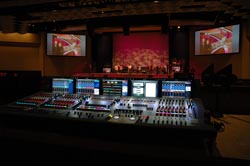
A Midas XL8 digital console at the FOH position of the Christian Faith Center in Seattle, WA.
Such a vision would surely hasten the development of audio networks that have digital consoles as their hub. And while the industry struggles to establish a universal protocol, other battles have been fought and, largely, won. It seems we no longer need to worry about whether a console will take up too much space in an auditorium, whether it will have a sufficient number of channels, or whether it will sound as good as its analog predecessor.
A daily selection of the top stories for AV integrators, resellers and consultants. Sign up below.
"Digital consoles have already allowed much more flexibility and smaller footprints than the analog ancestors they replaced," observed Yamaha's Lopez. "And as we go forward to the next generation, more processing power and more networkability will be necessary to improve upon that flexibility. But at some point, the numbers game will not be the issue. Can anyone realistically mix 300 channels from a small control surface? That doesn't seem tenable. The real focus will be on how effective the board is as a creative tool--user-friendliness, connectivity, sound palette options, and reliability."
Scaling Up
Interestingly, Lopez has seen that it is mid-sized, new-build projects that are more likely to embrace an all-digital network than larger, prestige venues. "It depends on the scale," he elaborated. "Higher-end systems will have analog tie lines for anything that might come up. Mid-level designs are more likely to be streamlined with very little analog in there. And it's surprising to see how many people are embracing the network concept."
Perhaps we are looking at a generation issue, with the big venues being directed by consultants and technical managers who are the top of their profession and who were brought up on analog mixing, while the middle ground is increasingly being serviced by younger contractors and engineers who are more network-savvy.
"Older guys don't immediately buy into something that's the latest, greatest thing," said Digidesign's Scovill. "We've got some staunch analog guys on our roster list with 'golden ears', and we have had to work hard to make them believe in our product. But we can't focus all our energy on them. There's a new generation of sound engineers who are in their early 20s who have had no exposure to analog mixing whatsoever. To them, analog is exotic!"
And no matter which direction you come at digital mixing from, it seems there is a genuine desire among developers for the technology to become more and more useful. "Digital stuff is exciting," concluded Allen & Heath's Rogers. "The key was making it sound as good as, or better than, analog. Once you've proved you can do that, it then comes down to signal management and distribution. We're doing it to improve the lives and the work of our customers, not just because we can."
Audio Consoles 2008

Yamaha LS9
The 32- and 64- input Yamaha LS9 Series consoles were designed specifically for sound reinforcement requirements within small- to medium-sized houses of worship, regional sound companies, and corporate audio/video presentation. The consoles can also be used as auxiliary mixer/channel expanders for the M7CL and PM5D consoles. The LS9 series console is housed in a small footprint frame, and consists of built-in MP3 recorder, and shares the same sound quality, built-in effects, EQ, and dynamics processing as that of the M7CL console.
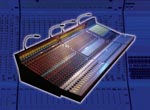
Cadac S-Digital Console
Designed specifically for theatre and live sound applications, Cadac's S-Digital audio mixing console represents a radical departure from other live sound console designs, by combining the familiar surface architecture, character and functionality of the industry benchmark Cadac J-Type, with the operational and creative benefits of digital audio control. Cadac has developed a proprietary high speed digital communications system to overcome the short-falls experienced with traditional digital audio and control-based protocols, such as system control latency and audio delays.

Innovason Pro FX
The new Pro FX console package from Innovason is suited to both FoH and monitoring applications, either on the road or in fixed installations. Developed to take full advantage of Innovason's recently launched internal effects card, Pro FX is available for both the Sy48 console or the larger Sy80, depending on customer requirements. Along with the control surface, the defining elements of the Pro FX package are the inclusion of the new FM-8VB internal effects module offering 32 effects engines. This plug-in module occupies one slot in the local rack.
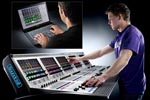
Soundcraft Vi Series
The Soundcraft Vi Series digital console has more new features and facilities about to be released. First, starting in March, the desks will support multiple stageboxes. This means that a digital patchbay can be created where the engineer can select the 64 inputs to a Soundcraft Vi6 from a selection of inputs available on any of the connected stageboxes. So, for example, with two stageboxes connected, there are 128 inputs to select from; with three there would be 172, and so on.
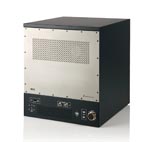
Digidesign Mix Rack
Digidesign's Mix Rack is a new hardware option for the Digidesign VENUE systems that combines all stage, local audio I/O, and DSP processing into a single, compact 11-space rack. With its simplified and lower-priced configuration, Mix Rack is ideal for small- to mid-sized venues, houses of worship, and corporate AV applications. Fully compatible with both D-Show and D-Show Profile, Mix Rack offers an affordable entry into the state-of-the-art VENUE family. Mix Rack is a one-rack solution that maintains the hallmarks of the VENUE environment, flexible I/O options, native TDM plug-in processing, Pro Tools integration, and complete show file portability.
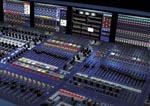
Midas XL8
The Midas XL8 live performance system offers design, sound quality, flexibility, and reliability with an ease and familiarity of use. XL8 has open-architecture, cross-platform, integrated audio control, and distribution systems, bringing control of not only audio but other aspects of a live performance to a single, intuitive control center. XL8 improves upon the performance of the analog consoles. XL8 represents a new generation of networked systems, requiring only mics, amps, and speakers to provide a complete audio system. The XL8's open architecture ensures that both third-party hardware and software, including plug-ins, can be easily integrated into the system.

Studer Vista 5 SR
Studer has joined the top end touring sound sector with the Vista 5 SR desk, a road-ready version of the established Vista 5 console. The Vista 5 SR is a compact and portable desk. The Vista 5 SR comes with preset configurations for front-of-house and monitor use. A stand-alone Config Editor tool allows the channel/bus structure to be customized, all of which can be saved for each particular show setup and instantly recalled from memory or a USB stick at a later date.
Allen & Heath...www.allen-heath.com
DiGiCo...www.digico.com
Digidesign...www.digidesign.com
Midas...www.midasconsoles.com
Klark Teknik...www.klarkteknik.com
Telex Communications...www.telex.com
Yamaha Commercial Audio Systems...www.yamahaca.com
